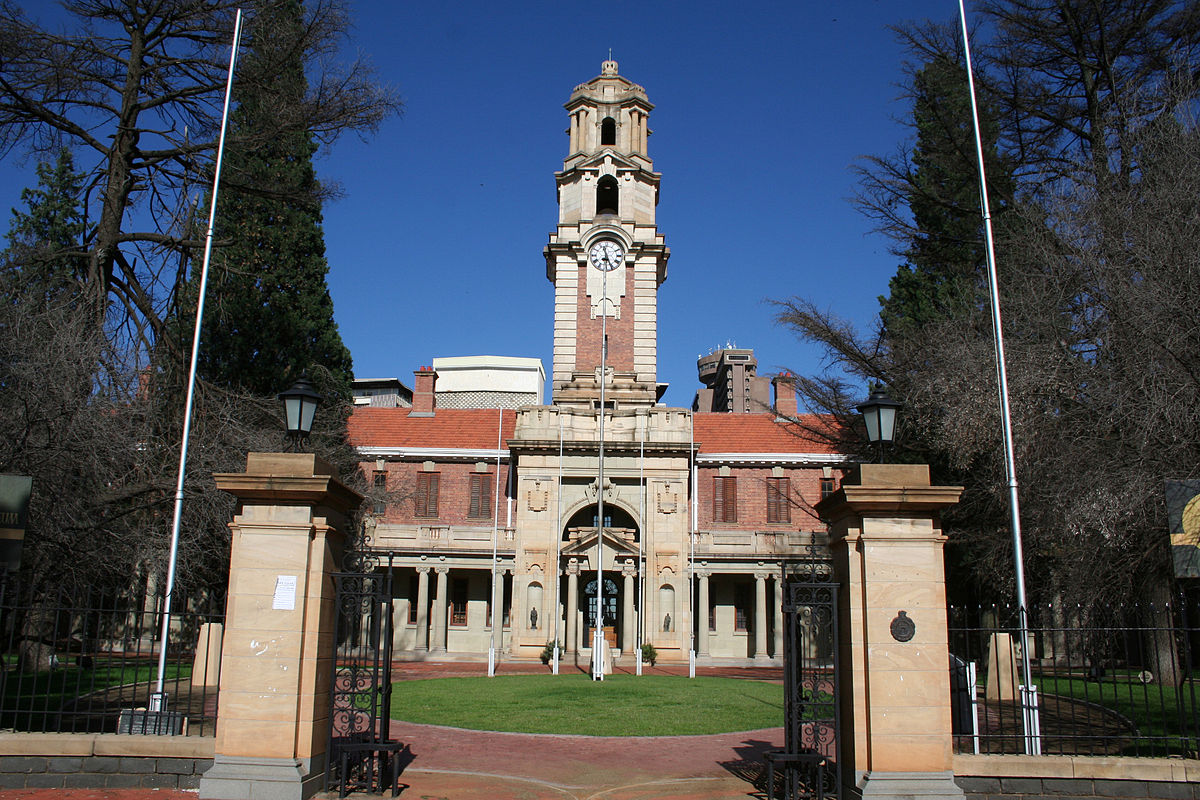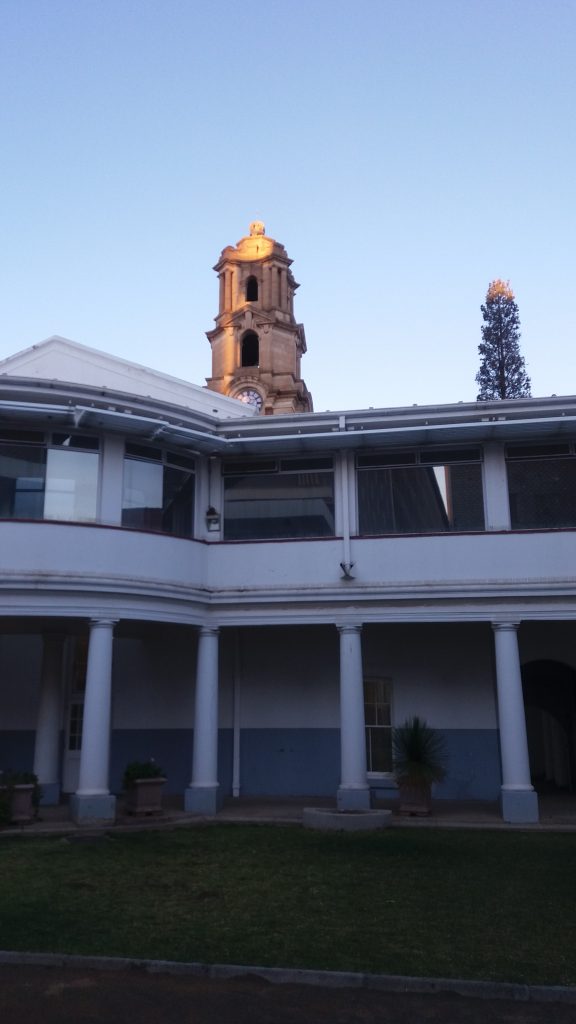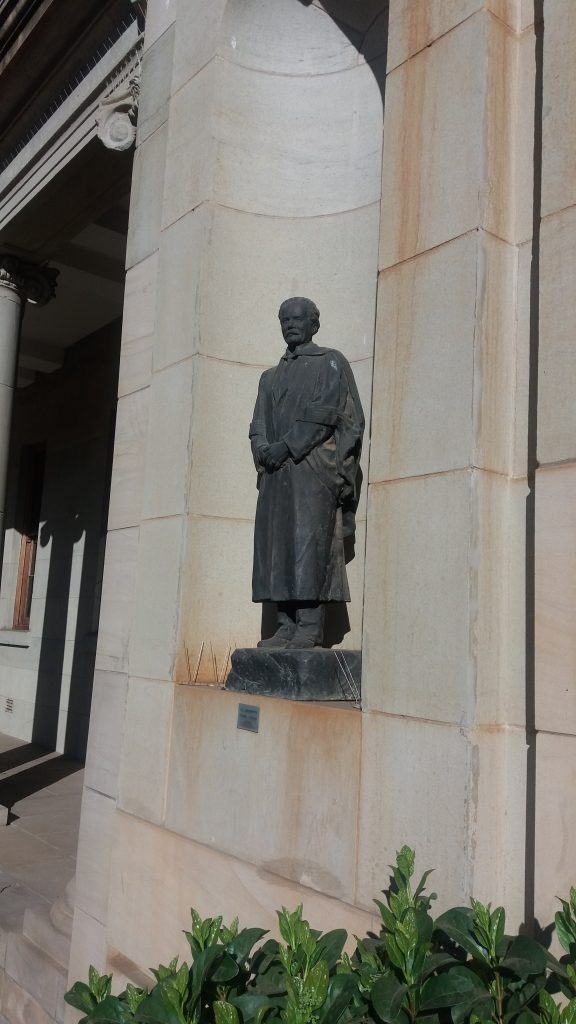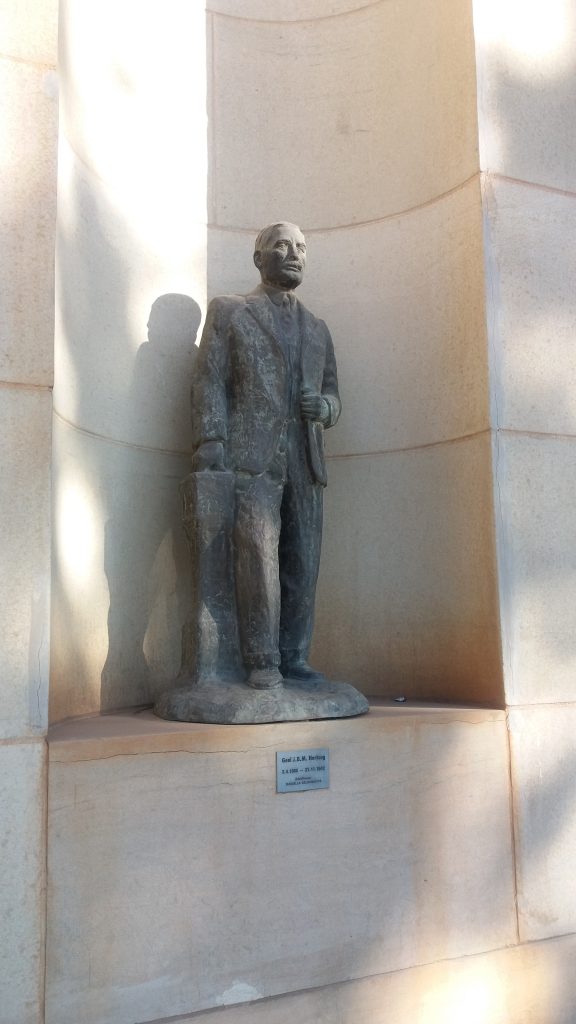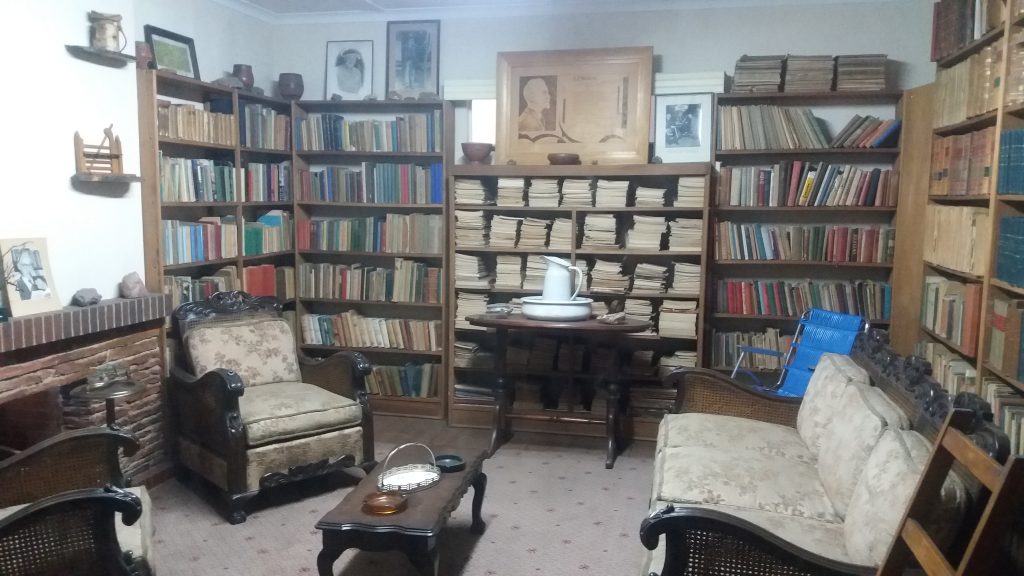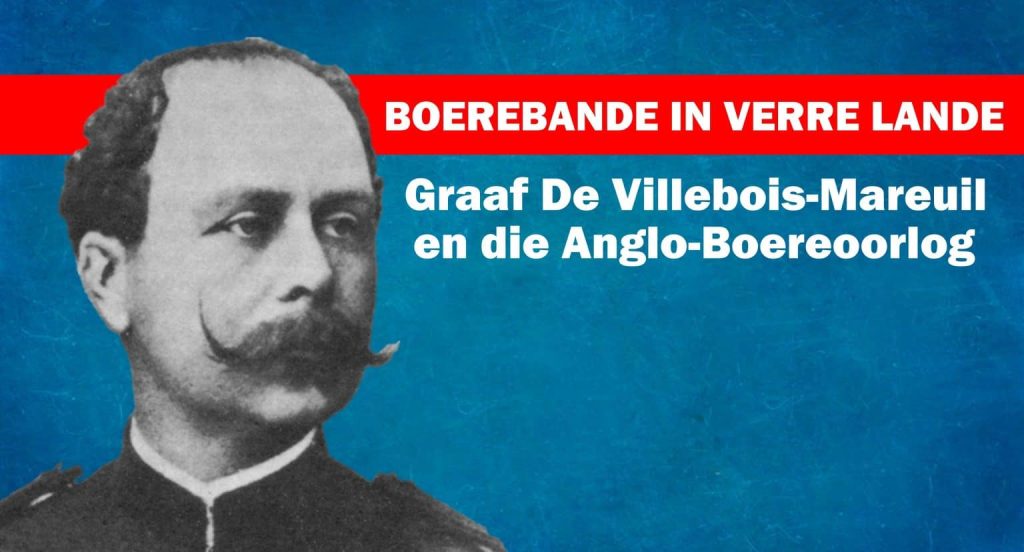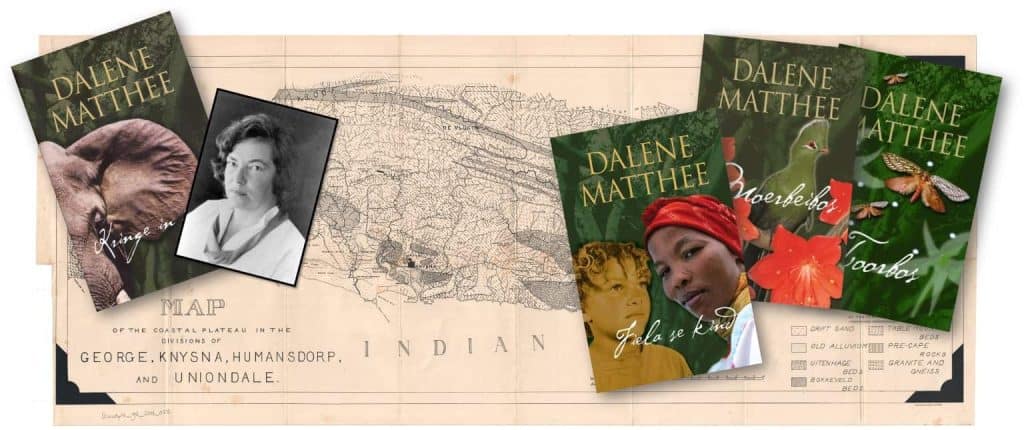In the series Heritage highlights, AfriForum sheds light on heritage landmarks and projects in the country where communities themselves step in to preserve our unique cultural and historical legacy. All over the world, heritage conservation projects are generally not generously funded by authorities, therefore “Friends” organisations play an essential role by raising funds, creating awareness and strengthening the hands of the staff of museums and heritage sites with voluntary aid.
Today we are talking to Paul Colditz, Chairman of the Friends of NALN Association, which is such an organisation that plays an indispensable role in one of the country’s most precious cultural jewels, the National Afrikaans Literary Museum and Research Centre (NALN) in Bloemfontein.
Alana: Thank you very much for participating in Heritage highlights, Paul. Please tell us more about the history of NALN.
Paul: NALN was established on 24 March 1973 by the then Free State Provincial Government. We have therefore just celebrated the fiftieth anniversary of NALN.
The major driving force behind the establishment of NALN was Prof Petrus (P.J.) Nienaber who was with the HSRC at the time and whose vision was that Afrikaans should be promoted by means of the preservation of the Afrikaans word heritage, with an emphasis on the collection and preservation of Afrikaans literature and literary publications. Prof Nienaber had been the driving force behind such a museum since 1966. During a meeting of the South African Academy of Science and Art in Stellenbosch, he first mentioned this dream.
At the same time, the Free State Advisory Library Committee also started campaigning for such a conservation institution independently of him. This committee expressed its concerns about the fact that so many manuscripts, first editions of Afrikaans books and authors’ personal items were being lost. Their idea was to collect material from writers who have a connection with the Free State and preserve it in a “Free State Writers Library”.
Later, Afrikaans music and theatre/drama were also added. NALN obviously also serves as an important research source on many aspects of the Afrikaans language.
NALN has grown into a unique national and indeed also an international institution where the cultural treasures of Afrikaans literature, music and theatre are collected and preserved. The collection has expanded to such an extent that unique artefacts can also be seen in rooms that thematically depict the life and work of distinguished writers. It is the only institution in the world that has such an extensive collection on all aspects of a language and therefore the preservation and promotion of NALN is of crucial importance for Afrikaans, but also for the broader South African population and history.
The latest addition is the office of the editor of the daily paper Volksblad, which was relocated to NALN and recreated there as a memorial, after Volksblad had been discontinued as a printed newspaper.
Alana: What else can visitors see and do at NALN?
Paul: The first attraction worth mentioning of course is the building itself in which NALN is housed. This is the old Government Building, the cornerstone of which had been laid in 1875. Next year we will commemorate this event of 150 years ago, along with the centenary of Afrikaans as an official language. The building, located at the end of the main street of Bloemfontein, is an impressive building from both the outside and the inside and it is worthy of a visit in itself.
The museum collection amounts to an estimated one million items. In addition to furniture and personal items of numerous authors and other literary legacies, it includes book and publication collections, as well as vaults full of manuscript material, magazines and newspapers, clipping collections, sheet music, poster and programme collections, artwork and audio-visual collections, plus many other unique attractions.
School and student groups visit NALN regularly, as do groups such as book clubs, various associations and interest groups.
Alana: When was Friends of NALN established?
Paul: Friends of NALN also owes its origin in 1973 to the Free State Provincial Government, as it was founded together with the establishment of NALN. Initially, Friends did not play such a significant role because NALN was adequately funded by the provincial government and there were sufficient staff members to operate NALN.
However, in 2015 Friends of NALN were reestablished and a new constitution was written and implemented. This took place under the guidance of the then curator of NALN, the late Otto Liebenberg. Funding and staffing had been curtailed dramatically by the new government in the Free State and therefore Friends were reactivated to play a more prominent role in ensuring the survival of NALN.
Alana: Tell us more about this role please?
Paul: While we remain careful not to interfere with the work of the small staff corps that remains at NALN, Friends are trying to provide certain essential services that will ensure the future survival of NALN as a national and international asset. (Actually, one cannot speak of a “staff corps” any longer. Out of an initial 42 expert staff members, only 2 expert staff members are currently left).
Volunteers out of the ranks of Friends help staff with their duties, such as sorting and unpacking collections and wherever they need assistance.
Friends also employ a person to assist the staff and receive visitors. This gentleman initially served as a security guard at NALN for many years. His knowledge of NALN and loyalty to the staff and the institution means that we are comfortable to employ him in this role.
Another important function is the sale of second-hand books from the Book Cellar to obtain much-needed funds. The books are housed in the old boiler room. Here hundreds of books for every imaginable taste are for sale. There is also a memorial wall in the Book Cellar where famous authors and artists who visit NALN or perform there, leave messages and their signatures.
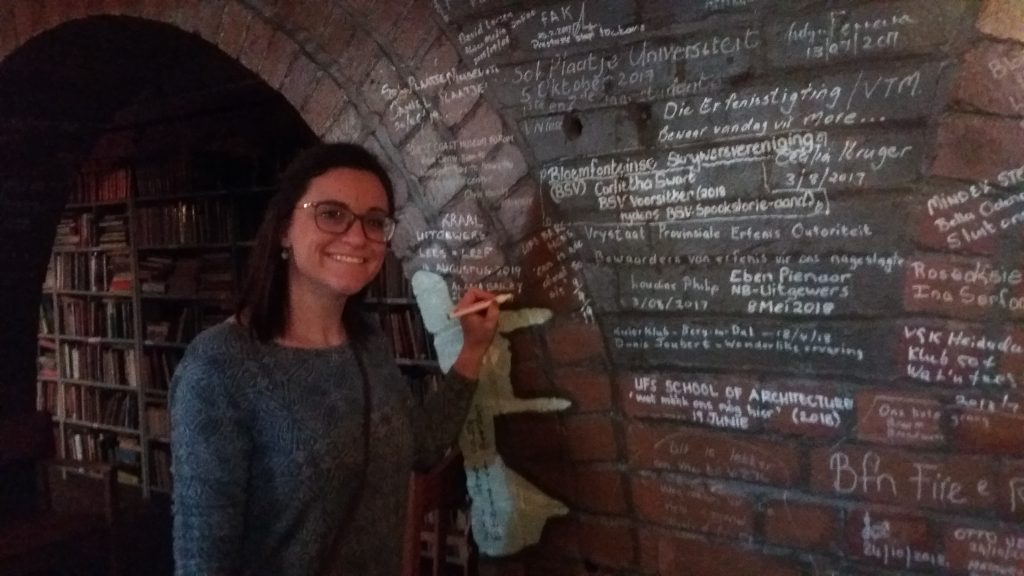
One of Friends’ greatest contributions is to ensure that NALN receives visitors and to keep the celebration of our cultural heritage alive. This is done by hosting book launches, celebrating the lives of writers and poets and their legacies, organising musical performances and similar events that take place in the evenings or sometimes on Saturdays.
Friends has a very active Facebook page which attracts approximately 60 000 visitors per month. Here we pay tribute to our authors, poets and artists, and share important information relevant to NALN and Afrikaans.
(https://www.facebook.com/search/top?q=vriende%20van%20naln)
Alana: Are there any special annual events hosted by Friends?
Paul: Yes indeed!
NALN forms an integral part of the Free State Arts Festival. The festival will even be launched at NALN next year. Friends annually hosts the series, Hulde aan helde (A tribute to heroes) as part of the Arts Festival. Special milestones in the lives of famous Afrikaans authors and poets – such as birthdays – are then celebrated and their lives and work discussed by experts. In 2024 tributes were paid to TT Cloete (born a century years ago), PG du Plessis (born 90 years ago) and Etienne van Heerden (born 70 years ago).
In addition, publications and exhibitions, lectures on relevant topics, tribute events and even interactive events such as a murder mystery game that took place this year are hosted at NALN. This often happens in collaboration with cultural organisations and educational institutions.
Alana: What are some of the challenges you face and what is on your wish list?
Paul: There are many challenges which can usually be traced back to the lack of funding and staffing provided by the Free State government. Actually, NALN – as the name suggests – should have been a national museum and research centre, but an unfortunate combination of circumstances resulted in the then Free State government taking the responsibility upon itself. Better funding and staffing, as well as more independence might have been the outcome if NALN had indeed been declared to be a national museum. This problem poses a real threat to the sustainability of NALN. It is impossible for two people to do everything that needs to be done at NALN.
The wish list therefore includes better funding and staffing, especially including librarians, museum experts, linguists and researchers, as well as better support by the entire Afrikaans community throughout the country and the world.
Furthermore, substantial maintenance work to and renovation of the building and grounds are required. The site lends itself to something special, but currently does not enjoy the attention it deserves. In addition, much better security is also essential.
The digitisation of valuable collections, materials and publications that may be lost due to aging needs urgent attention.
Alana: How can people get involved?
Paul: Anyone can join the Friends of NALN Association and help with marketing and fundraising. Membership fees currently amount to a mere R120 per annum, which is used to pay the salary of one person and to host the functions mentioned above. We usually fill all available seats with our book launches and other events, but each event costs money in terms of the design and production of banners, marketing materials and the refurbishment of essential audio and other equipment. We also like to provide refreshments at our events to give visitors and attendees the opportunity to socialise with each other and the speakers.
People who are interested in joining, can contact the secretary of the Friends of NALN Association, Annelien Diedericks, at anneliennaln@gmail.com.
They can of course also follow our Facebook page. All our functions and events are advertised there, and we welcome all who attend.
People who do not live in or near Bloemfontein, but are passing through, should please set time aside to visit NALN and support our Book Cellar. However, be warned: you won’t be able to take a quick walk through the museum. There is far too much to see and experience!
Alana: Finally, if other communities also want to get involved at a site, monument or museum in their vicinity, what is your advice to them please?
Paul: In his book Good to great, Jim Collins says that you must adopt a hedgehog position. This is a position that you fall back on to protect your business when things go awry. The hedgehog position consists of three elements: (1) what you are best at in the world; (2) the passion shared by everyone involved; and (3) the economic engine, in other words how the business can be financed sustainably.
Great plans always start with a single person who has an idea and sets about the project with determination.
Gather volunteers who share your interest and passion to help you. Write down what needs to be done, who needs to do it and how it needs to be done, so that participants will know and understand exactly where they fit into the plan. Draw up a “constitution” (it does not have to be very formal). And finally, get clarity on how you will fund the project.
Alana: Thank you very much Paul – we appreciate your contribution to Heritage highlights but have even more appreciation for the excellent work you and the fellow Friends are doing at NALN! We can only agree with you that a visit to NALN is a wonderful experience that requires a lot of time. We encourage anyone with a love for Afrikaans, literature and history to become members of Friends and support this invaluable institution and team with a mere R120 per annum.
Photo: National Afrikaans Literary Museum and Research Centre – Museum Explorer SA



